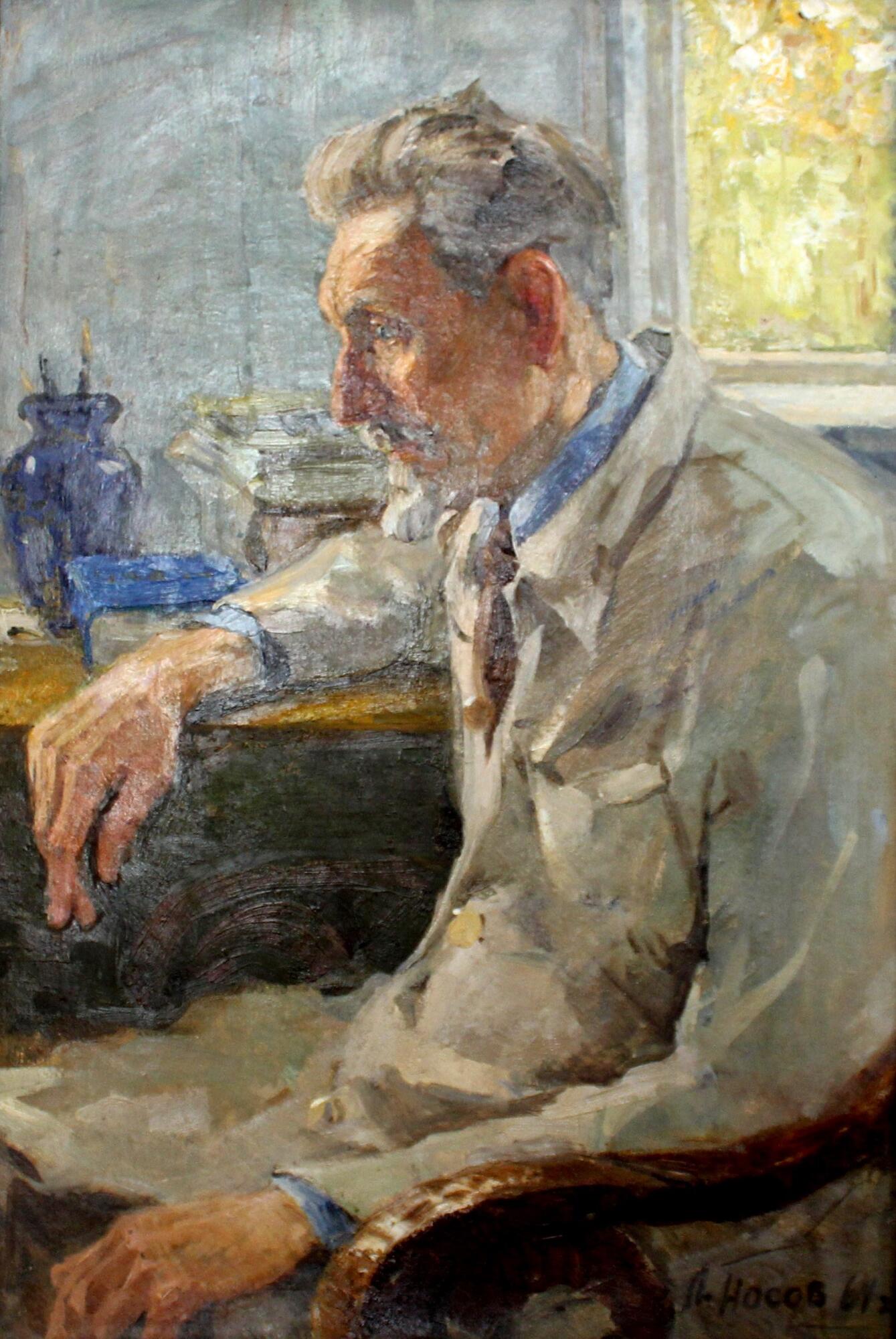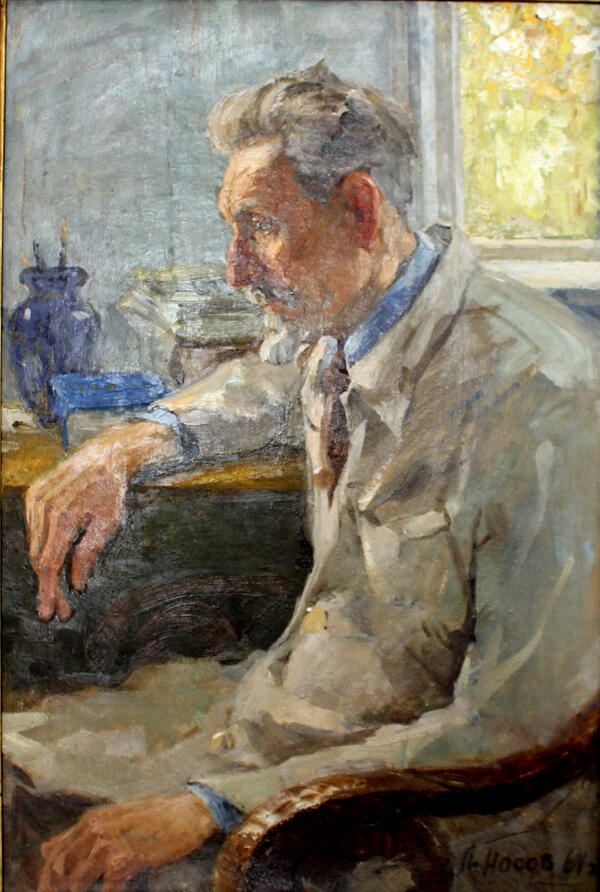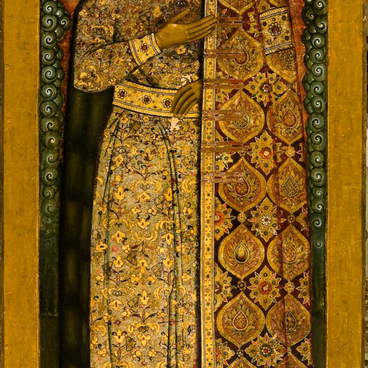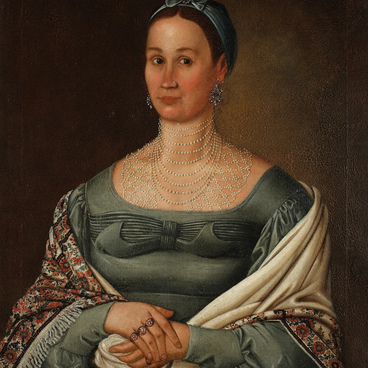The Uglich Museum houses a portrait of the expert in local lore and history Boris Arsenyevich Dmitriev painted by the Moscow artist Leonid Nikolayevich Nosov. The painter spent many years working in Uglich, took interest in its history, met museum curators, and talked with them. Part of his artistic legacy is displayed in the museum’s exhibition and stored in its archives, while the painting “Curse the War” dedicated to the tragic period of the Time of Troubles belongs to the history department.
The portrait of Boris Arsenyevich Dmitriev eternalized the image of the expert in local lore and history who contributed greatly to the research of Uglich history: he started working at the museum in 1938, was its director between 1943 and 1948, and maintained ties with the museum until the end of his life.
Dmitriev was born in Moscow in 1892, studied at the Moscow Institute of Commerce, and after the revolution of 1917, continued his education at the Socialist Academy of Social Sciences. He participated in expeditions to the Far North and co-authored a book about the Northern Sea Route. During the trial of the Democratic Union, he was exiled to Siberia where he established the Museum of Comprehensive Research of the Narym Area. After the end of the exile, he came to Uglich.
During the Great Patriotic War, museum curators continued researching the history and culture of the local region, Dmitriev wrote the article “Key Issues of Local History and Geography” and worked on a textbook for teachers. It was during his work as a director that the reconstruction of the Kremlin’s monuments began.
When Uglich started welcoming tourist groups regularly in the mid-20th century, Dmitriev supervised the preparation of mass publications. In 1961, one of the first popular guides to the museum was released. It was the result of Boris Dmitriev’s long-time work on preserving monuments, collecting and interpreting exhibits, and developing scientifically based exhibitions.
Leonid Nosov painted the portrait of Dmitriev during the last year of the latter’s life, depicting him at his desk. Dmitriev was portrayed as an elderly man, an expert in local lore and history, and an experienced museum curator, with a focus on his traits as a scientist “of the old school”.
The portrait of Boris Arsenyevich Dmitriev eternalized the image of the expert in local lore and history who contributed greatly to the research of Uglich history: he started working at the museum in 1938, was its director between 1943 and 1948, and maintained ties with the museum until the end of his life.
Dmitriev was born in Moscow in 1892, studied at the Moscow Institute of Commerce, and after the revolution of 1917, continued his education at the Socialist Academy of Social Sciences. He participated in expeditions to the Far North and co-authored a book about the Northern Sea Route. During the trial of the Democratic Union, he was exiled to Siberia where he established the Museum of Comprehensive Research of the Narym Area. After the end of the exile, he came to Uglich.
During the Great Patriotic War, museum curators continued researching the history and culture of the local region, Dmitriev wrote the article “Key Issues of Local History and Geography” and worked on a textbook for teachers. It was during his work as a director that the reconstruction of the Kremlin’s monuments began.
When Uglich started welcoming tourist groups regularly in the mid-20th century, Dmitriev supervised the preparation of mass publications. In 1961, one of the first popular guides to the museum was released. It was the result of Boris Dmitriev’s long-time work on preserving monuments, collecting and interpreting exhibits, and developing scientifically based exhibitions.
Leonid Nosov painted the portrait of Dmitriev during the last year of the latter’s life, depicting him at his desk. Dmitriev was portrayed as an elderly man, an expert in local lore and history, and an experienced museum curator, with a focus on his traits as a scientist “of the old school”.



